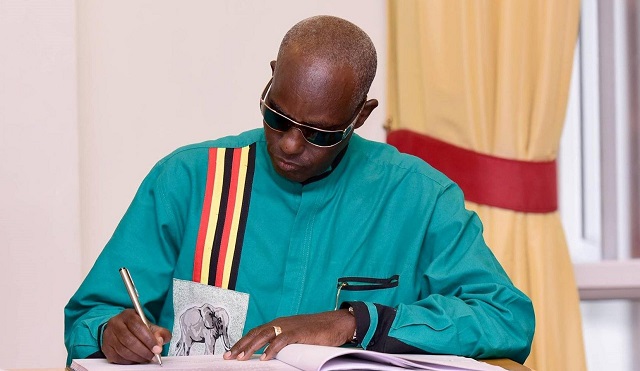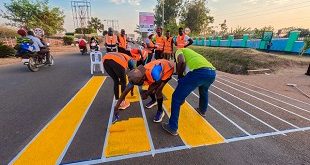
Kampala, Uganda | THE INDEPENDENT | Over his more than 40-year career, General Elly Tumwine was renowned as a National Resistance Army war hero. He served as the Army Commander, one of the army representatives to Parliament, Chairman of the UPDF General Court Martial, and Minister in President Yoweri Museveni’s government.
Little has been written about General Tumwine’s childhood, and how he fell in love with his first and perhaps the most cherished career, fine art.
Early childhood, cheating death
Born in Burunga in Mbarara district on April 12th,1954, Elly Tumwine went to Burunga Primary School, Mbarara High School, and St. Henry’s College Kitovu. In his brief message announcing Gen. Tumwine’s death Thursday morning August 25th, 2022, President Museveni confirmed that he had taught him at Burunga Primary School in 1967. As many mourn his passing, it’s nothing short of a miracle that he had lived to the age of 68.
In childhood, Tumwine cheated death four times. He had three snake bites that nearly took his life. In 1963, Tumwine and some of his family members survived a lightning strike on their house. His elder brother died in the fateful strike while his younger brother died months after. Tumwine survived with severe burns on the stomach, which were treated at Mubende hospital.
The other time Tumwine cheated death was during the bush war following the November attack at Bukomero. General Elly Tumwine has been using November 1st each year to launch his songs and painting in remembrance of the day he nearly died.
Interest In Fine Art and Times At Makerere
Tumwine previously shared that his interest in Fine Art was accidental so to say. That he joined the fine art class because of the then-famous guitarist, Rock Ruganzi who had been hired by Mbarara High School to teach art. The young Tumwine was instead interested in playing Ruganzi’s guitar.
“I got interested in Art not because of anything else but to enjoy Ruganzai’s guitar in the art room. By the end of Senior one, he was the one who advised me that when you reach Senior Four, do art as your fourth principal,” shared Tumwine before he fell sick.
Tumwine would have joined Ntare School for his A’ Level but Ntare did not teach Fine Art, so he joined St. Henry’s Kitovu where he was inspired by Professor Francis Xavier Musango Gwa Ntamu
“I had wanted to be a lawyer like my cousin John Wycliffe Kazoora and Grace Ibingira. But Francis Musango Gwa Ntamu told us that when you are an artist, you don’t have to look for a job,” said Tumwine. In 1974, Twmwiine was admitted to the Makerere Art School for a Degree in Fine Art and a concurrent Diploma In Education.
Tumwine The Campus Photographer
“I’m the one who started this giving of photographs immediately after the event. And we started with a boxing event in the main hall. Then after that, we did sports at a football field,” narrated Tumwine.
Each time there was a major event at Parliament or at the army headquarters, General Tumwine would be seen seemingly competing with journalists true to his nickname ‘Campus photographer at Makerere University’.
In November 2021, Gen Tumwine launched his book titled “Liberated My Art Life,” in which he partly documented his life as an Arts student at Makerere University. “During my youth, in spite of the challenges of a bad regime, as a youth, my art life at Makerere was very exciting. Mainly not because of anything else, I was liberated to think freely. That is why I’m calling my book liberated,” he revealed.
Liberation of the mind was very important said Tumwine. “For Art, you are exposed to blow your mind free. And create the limit. You are taught how to look at things in a more objective way. Then you are taught how to capture moments with your pen, your pencil,” he said.
It is from studying fine art that Tumwine would pick an interest in freedom and liberation “There is nothing liberating as you having the freedom and the means to create what is not there. And that is why I will never follow who designed a tie. Because really what is the purpose of a tie? A rope in someone’s neck. But people just follow because one person designed it,” joked Tumwine who was famous for his round-necked shirts.
He was a member of Lumumba hall while at Makerere and later served as its patron. General Tumwine remained indebted to Makerere. “My years at Makerere were very important. They were fundamental in transforming the rest of my life. My thinking, my philosophy, my happiness, my joy my everything,” he said.
When Uganda hosted the OAU meeting in Kampala, Gen. Tumwine was the Secretary General of the Fine Arts Student’s Association. He together with other students were tasked to draw a massive portrait of then President Iddi Amin.
The portrait measuring sixteen meters by ten was to be displayed at the stadium. While the lecturers feared taking on the task, they tasked Gen Tumwine and three others to draw the portrait, a task they accomplished. “The beauty of it was that we were paid good money. We were paid 1.6 Million Shillings. It was the first time I opened a bank account. I said bye to poverty,” he wrote.
No wonder, Gen. Tumwine is said to have been one of the artists that designed the present current five thousand Shillings note, which will remain in the archives of Uganda’s currency. Tumwine is said to have designed some of the camouflage uniforms for the army.
Tumwine at Makerere During Amin Regime
In 1976, Tumwine would participate in the historical strike following the killing of a student, Paul Sserwanga. He was brutally murdered by suspected Idd Amin State Research Bureau operatives. The then Guild President, Olara Otunnu organized a protest march in Kampala.
Gen. Tumwine played a crucial role in that protest. He and others printed the placards for the protest. Tumwine joined a protest called by Lumumba hall chairperson, Kagata Namiti for a march to the City Square up to Kibuli where Paul Sserwanga was buried. That day turned out to be the infamous “Black Tuesday in Makerere University’s history.
Tumwine narrowly escaped arrest by hiding in the wardrobe as soldiers broke into halls of residences targeting students that had participated in the strike. He joined the likes of Dr. Kiiza Besigye, Henry Tumukunde, and David Tinyefunza aka David Sejjusa.
Shortly after the official opening of Lumumba Hall in 1971, the Uganda Army soldiers raided Mary Stuart, or Box, the female hall of residence next to Lumumba. Students of Lumumba engaged the soldiers in a fight during which one of the male students named Gongom died. From this point on, a Lumumba-Box or Lumbox solidarity was born. A monument was erected in his honor. The Gongom monument is addressed as His Majesty, Highness, and dressed in a graduation gown.
This attire inspires students to read and work hard but is also a symbol of unity. During the invasion, the soldiers destroyed “Gongom”. “We discovered that gongom had been destroyed, and this time we made a big sculpture together with Kibira who was good in metal welding. So we said let’s give gongom a real height, give him a long penis, to show that he is in charge of this place,” narrated Tumwine.
Adding that, “After some time, we said gongom can’t be alone, then we went and sculptured gongomes.” In 1978, Elly Tumwine abandoned his teaching job to join the FRONASA forces led by Yoweri Museveni. “When I joined the armed forces, I did everything from cooing to carrying luggage. Because the president had taught me in P7 and when I heard that he was the one leading the group, and we were tired of Iddi Amin, I joined him,” he said.
In 1981, when Museveni went to the bush to form the National Resistance Army (NRA), Tumwine went with him. He is reported to have fired the first shot in the Luwero triangle war. He has served as Army commander, Minister of State for Defence, Minister of Security, Director General of the External Security Organization (ESO), and Army MP among others.
*****
URN
 The Independent Uganda: You get the Truth we Pay the Price
The Independent Uganda: You get the Truth we Pay the Price




We should miss him indeed and we should meet with him again in heaven.
We shall miss him indeed
Inspiration